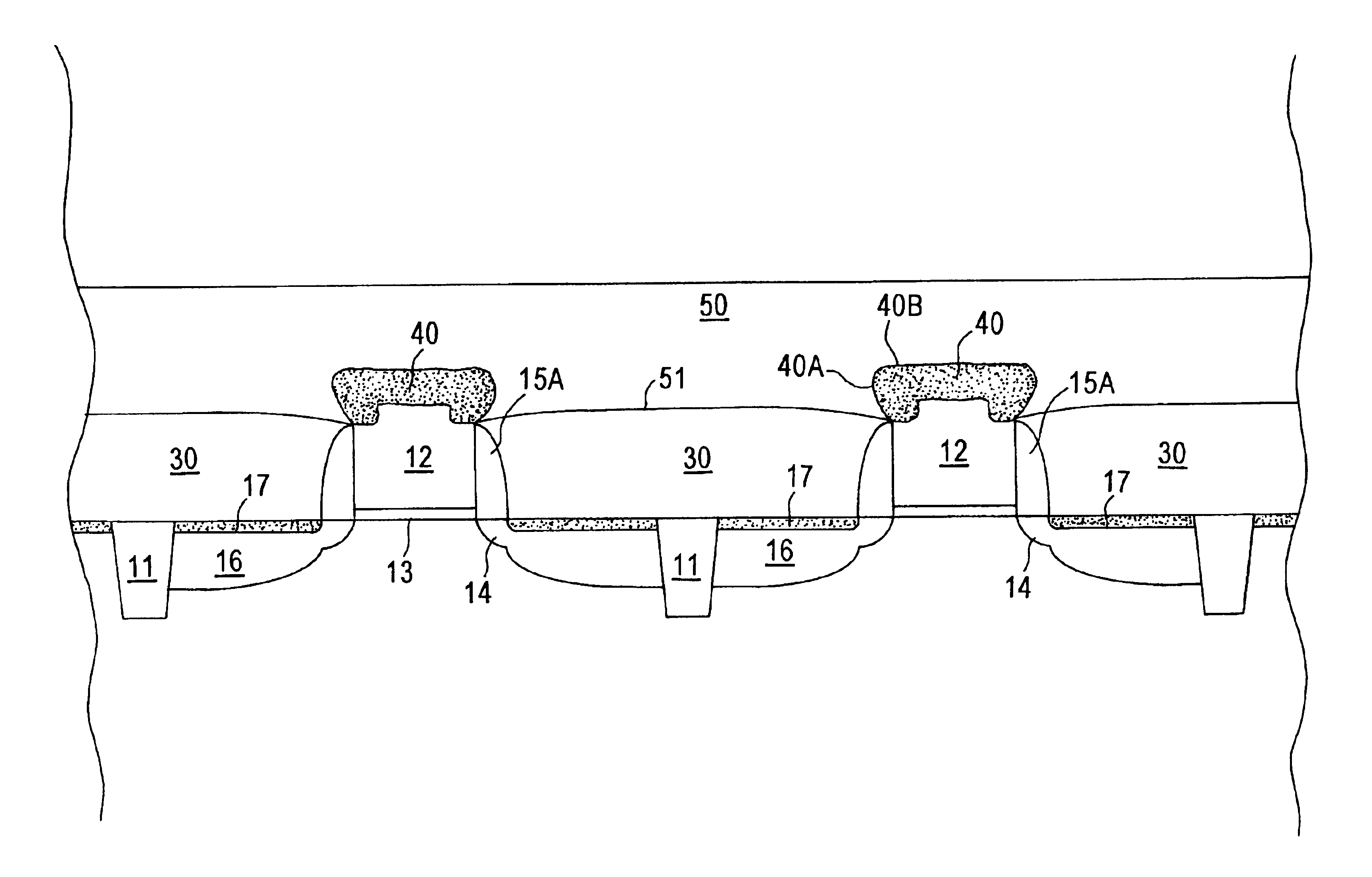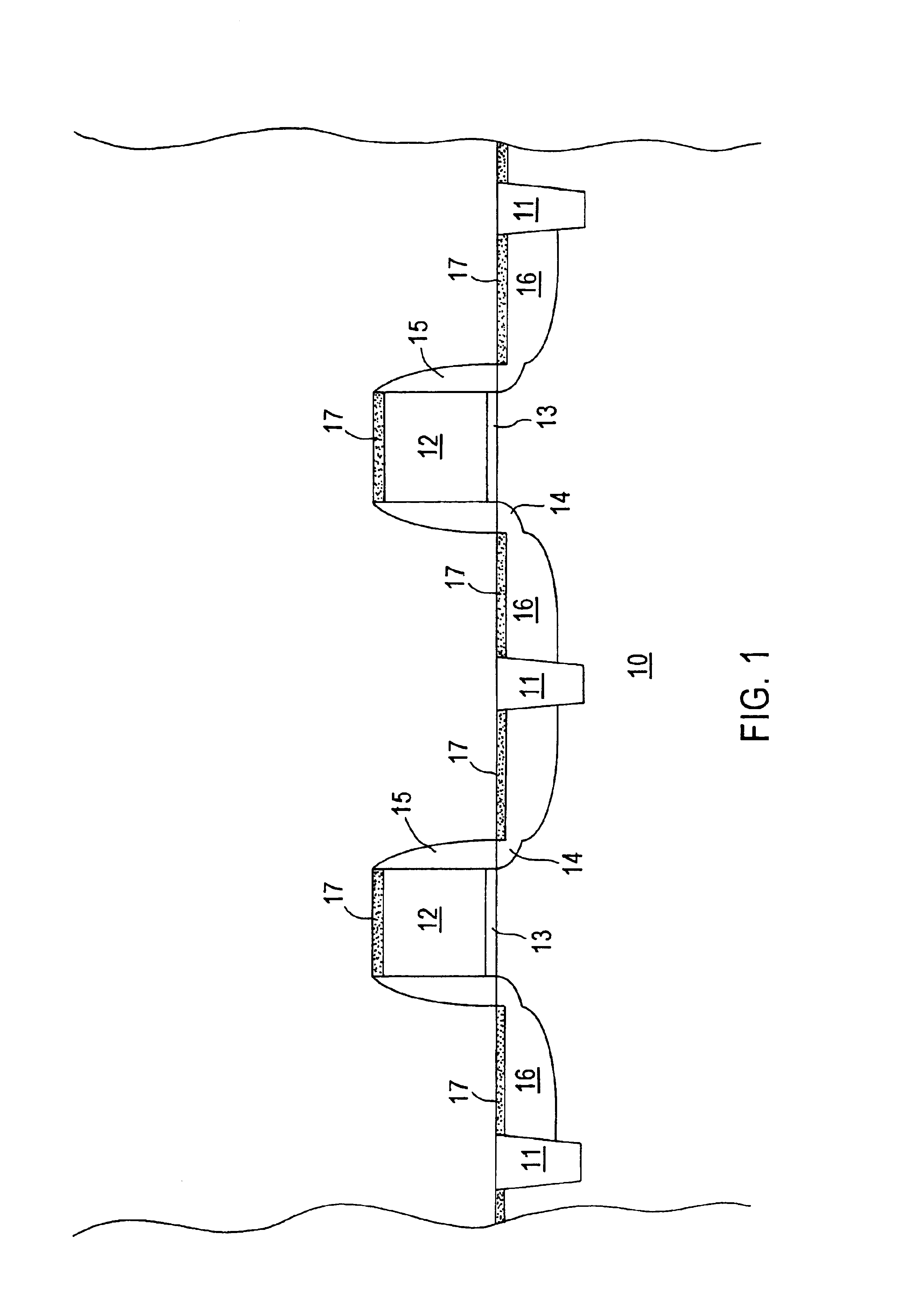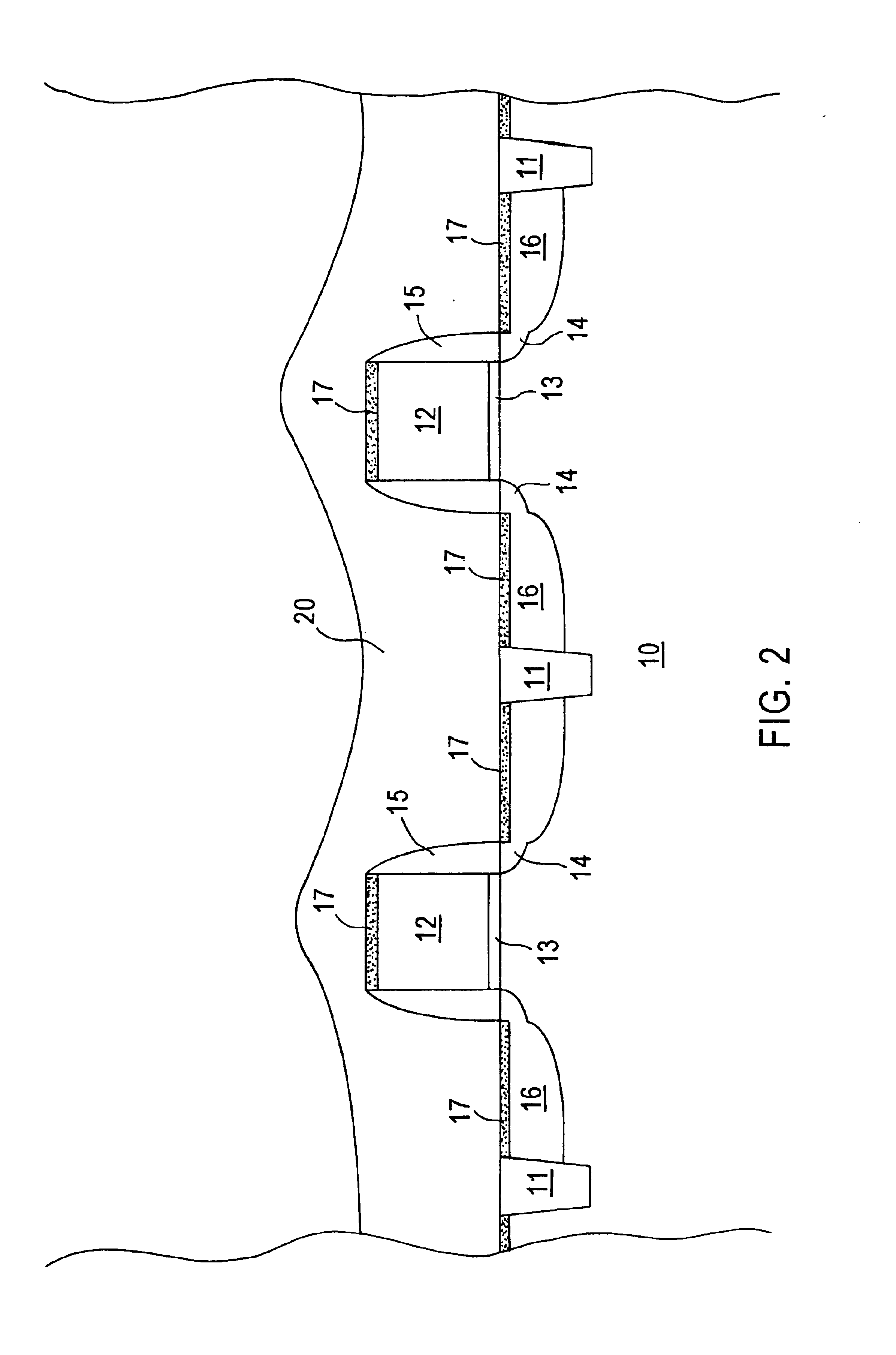Enhanced silicidation of polysilicon gate electrodes
a technology of gate electrodes and polysilicon, which is applied in the direction of semiconductor devices, semiconductor/solid-state device details, electrical equipment, etc., can solve the problems of limiting the circuit operating speed, becoming increasingly difficult to accurately form discreet devices on semiconductor substrates exhibiting the requisite reliability,
- Summary
- Abstract
- Description
- Claims
- Application Information
AI Technical Summary
Benefits of technology
Problems solved by technology
Method used
Image
Examples
Embodiment Construction
The present invention addresses and solves problems attendant upon implementing conventional salicide technology in fabricating micro-miniaturized semiconductor devices. As device geometries shrink into the deep sub-micron regime, the operating speed becomes an issue. Accordingly, it is desirable to form a relatively thick metal silicide layer on the gate electrodes. However, as the thickness of the metal silicide layers formed on the source / drain region increases and / or the junction depth decreases, metal silicide spiking occurs through the junction as well as metal silicide separation. The present invention addresses and solves that problem generated by conflicting processing objectives by providing efficient methodology enabling the fabrication of semiconductor devices having a relatively thick metal silicide layer on the gate electrodes while having a relatively thin metal silicide layer on the source / drain regions.
In accordance with embodiments of the present invention, an init...
PUM
 Login to View More
Login to View More Abstract
Description
Claims
Application Information
 Login to View More
Login to View More - R&D
- Intellectual Property
- Life Sciences
- Materials
- Tech Scout
- Unparalleled Data Quality
- Higher Quality Content
- 60% Fewer Hallucinations
Browse by: Latest US Patents, China's latest patents, Technical Efficacy Thesaurus, Application Domain, Technology Topic, Popular Technical Reports.
© 2025 PatSnap. All rights reserved.Legal|Privacy policy|Modern Slavery Act Transparency Statement|Sitemap|About US| Contact US: help@patsnap.com



